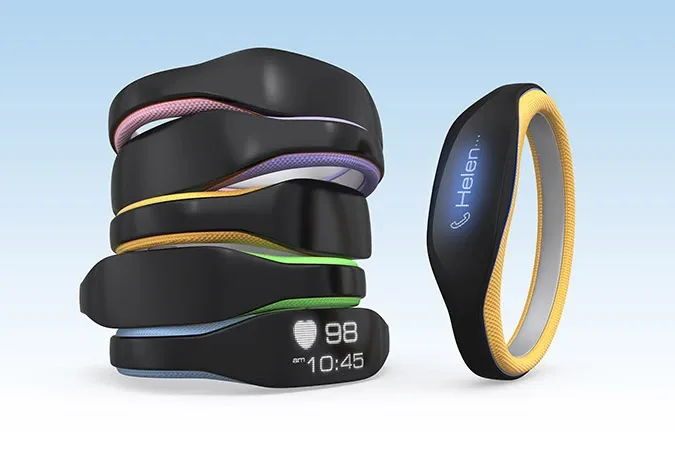PC Market Returns to Growth in 1Q24
Global PC shipments grew around 3% YoY in 1Q24 after eight consecutive quarters of declines due to demand slowdown and inventory correction, according to Counterpoint Research.

Shipments of wrist-worn wearables reached 34.2 million units, up 28.8% year over year during the second quarter of 2019 (2Q19), according to IDC. The top 5 companies, Xiaomi, Apple, Huawei, Fitbit, and Samsung, continued to push forward with new products and promotional campaigns during the quarter, collectively capturing 65.7% of the market, an almost 12-point gain from last year.
"Health is now at the forefront for these devices since companies have started providing actionable insights and prescriptive measures for end users," said Jitesh Ubrani, research manager for IDC Mobile Device Trackers. "Beyond health, mobile payment is also starting to become a mainstay as roughly two out of five wrist-worn wearables now include NFC, and many more simply use QR codes to complete transactions.
"While the wrist-worn form factor has been very popular, the other important part is the experience," added Ramon T. Llamas, research director, Wearables. "Glancing at data remain the popular use case, but to be able to interact with the device via smart assistants, scroll easily through data or connecting to smart home applications and devices raises wrist-worn wearables’ utility. Layer on top of this the growing market for applications on smartwatches, and the value of these devices increases further
Xiaomi maintained the top position thanks to its latest Mi Band 4. The company focuses almost exclusively on wrist bands and has used the low cost to lure new users into its ecosystem of products. China remains the most active market for Xiaomi's products though expansion outside China continues to be a priority.
Apple ranked second in terms of units although the company outpaces all others in terms of dollar value as the average selling price for an Apple Watch was $448 during the quarter. IDC anticipates shipments of the Apple Watch to grow by 10.8% by the end of 2019 and capture 38.9% of all smartwatches shipped during the year.
Huawei took the third position with its dual brand strategy aimed at capturing the mass market with the Huawei brand and a younger audience with the Honor brand. Many of the company's wearables are bundled with its smartphones, thereby putting the company in a challenging position given all the recent uncertainty around its smartphone business.
Fitbit, the market pioneer, ranked fourth in the recent quarter. Though its smartwatch business declined, thanks to poor reception of the Versa Lite, the company did manage overall growth due to the popularity of the newly launched Inspire wristbands. Samsung rounded out the top 5 and achieved the highest growth rate amongst the top 5 due to the introduction of its low-cost wrist bands, the Galaxy Fit and Galaxy Fit e, and the popularity of the Galaxy Watch.
Top 5 Wearables Companies, 2Q19 (shipments in millions) | |||||
Company | 2Q19 Shipments | 2Q19 Share | 2Q18 Shipments | 2Q18 Share | Growth |
1. Xiaomi | 5.9 | 17.3% | 4.2 | 15.6% | 42.2% |
2. Apple | 5.1 | 14.8% | 4.7 | 17.8% | 7.0% |
3. Huawei | 4.8 | 14.1% | 1.7 | 6.6% | 175.7% |
4. Fitbit | 3.5 | 10.1% | 2.6 | 9.9% | 32.0% |
5. Samsung | 3.2 | 9.4% | 1.1 | 4.1% | 195.1% |
Others | 11.7 | 34.3% | 12.2 | 45.9% | -4.0% |
Total | 34.2 | 100.0% | 26.6 | 100.0% | 28.8% |
The positive momentum in wrist-worn wearables is expected to carry forward as the category is projected to reach 152.7 million units by the end of 2019 with 21.7% growth over last year, and 194.1 million units by 2023, with a compound annual growth rate (CAGR) of 6.2%. However, growth in the category is relegated to watches as the market for wristbands will remain essentially flat with a 0.1% CAGR and share will decline from 41.2% in 2019 to 32.5% in 2023.